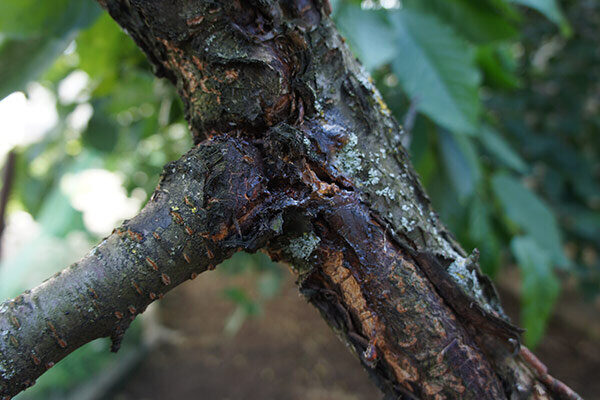Oak Wilt: How & Why We offer Confirmation & Treatment in Kalamazoo
Oak Wilt is one of the nastiest diseases the trees in your yard can face. This problem started in Texas and has spread to twenty-one states. Many homeowners are worried about it in Michigan, in particular, since it seems to have struck us the hardest.
Of course, many people also remember (and are experiencing) the problem with the ash trees and the emerald ash borer. Still, oak wilt might be even more serious because there aren’t as many physical symptoms of the issue until it gets too late.
Why Oak Wilt Matters
- Kills your oak trees
- Can harm wildlife
- May impact local industry
According to the Michigan State Government, “Oak wilt kills healthy red oaks. White oaks can also be affected but are more resistant and less vulnerable to mortality from the disease. Once a red oak becomes infected with the oak wilt fungus, the tree will die, and there is no treatment to save the infected tree. Once an oak wilt infection is confirmed, however, treatments are available to save surrounding oaks and stop the spread of this disease.”
It is important to note that all red oaks are susceptible to oak wilt, and these are also some of the most common trees used in suburban landscaping. When we lose a large number of these trees, it can also impact the wildlife in the area – especially those that need the acorns from oak trees. Of course, red oak wood is also a huge industry in Michigan.
According to the Michigan Oak Wilt Organization, the most common trees in our area area:
- Pin Oaks
- Northern Pin Oaks
- Northern and Southern Red Oaks
- Black Oaks
- Scarlet Oaks
- Bur Oaks
- Post Oaks
- White Oaks
- Swamp White Oaks
In general, knowing about whether or not your trees have oak wilt can help to keep your home safe. Since oak wilt does disrupt the structural integrity of the tree, you have to worry about it falling on structures, infecting other trees, and causing general destruction.
Oak Wilt Diagnosis
- Can be difficult to diagnosis
- Might take a while to show physical signs
- Requires help of a professional
Oak wilt is an extremely slow mover – it goes through the root systems and can be moved by insects that crawl on trees. Oak wilt can also move to yards through moving infected firewood from one location to your yard – it is common for people who share tools to spread oak wilt quickly.
The most common sign of oak wilt is when your red oaks suddenly drop their leaves. According to the Texas Oak Wilt Organization, “Most live oaks defoliate and die over a 1- to 6-month period following initial appearance of symptoms. Some live oaks take longer to die, and a few untreated trees may survive many years in various stages of decline. Occasionally, a few live oaks in an oak wilt center may escape infection and remain unaffected by the disease.”
It is important to note that when the symptoms appear, you have to act quickly. Red oaks will never survive oak wilt and may die within a month. Your trees will be bright against the trees next to it – don’t just assume that they are changing early or that it is normal. This is a warning cry that something is wrong.
In some trees, you will be able to see the leaves changing earlier, which will give you a better chance at treatment. You may also see something called a “fungal mat” which is found in the cracks of trees. This mat will put off a very distinct smell.
Oak Wilt Treatment
- Depends on where you live – each area has unique methods
- Can require professional tools
- Sometimes, removal is the only option
To manage oak wilt, pruning is one of the most effective treatments. Unless you know quite a bit about pruning and oak wilt treatment, it is important not to take this step into your own hands. Safely pruning the tree can extend the life of your tree quite a bit – and you cannot find out how to do this online. Instead, you need to have practical experience with safe pruning methods for your area. In Kalamazoo, the safe pruning techniques for oak wilt treatment are different from the ones in Grand Rapids, Ann Arbor, or South Bend.
The first thing you need to do is get a positive diagnosis on your tree – you need to know that it has oak wilt before you can treat it, or you could be creating more problems.
One of the best ways of treatment, according to Penn State, “Do not prune oaks in the late spring or summer because this creates fresh wounds that are attractive to insects that may be carrying the fungus. Prune only during November through mid-April.”
Our first step will be to break root grafts before trying to remove an infected tree – this is more common with red oaks. We have to trench between oaks in your yard and remove anything within 50 feet of the oak. It is better done when the soil is warmer, rather than during the winter months.
Then, we sadly have to remove trees. We will bury, burn, and debark the logs and stumps that we get from it – this is so contagious that we have to be careful not to spread the fungus to other trees.
Sadly, for most trees, oak will be a death sentence and there is nothing we can do about it. Still, you want to have professionals come in and make moves to save the other trees in your yard. This is not a problem that will go away on its own, nor will you be able to handle it by yourself.
If you believe that you have oak wilt in your yard, give us a call today at (269) 216-6811 and we can set up a time to visit you and your beautiful oak trees.


